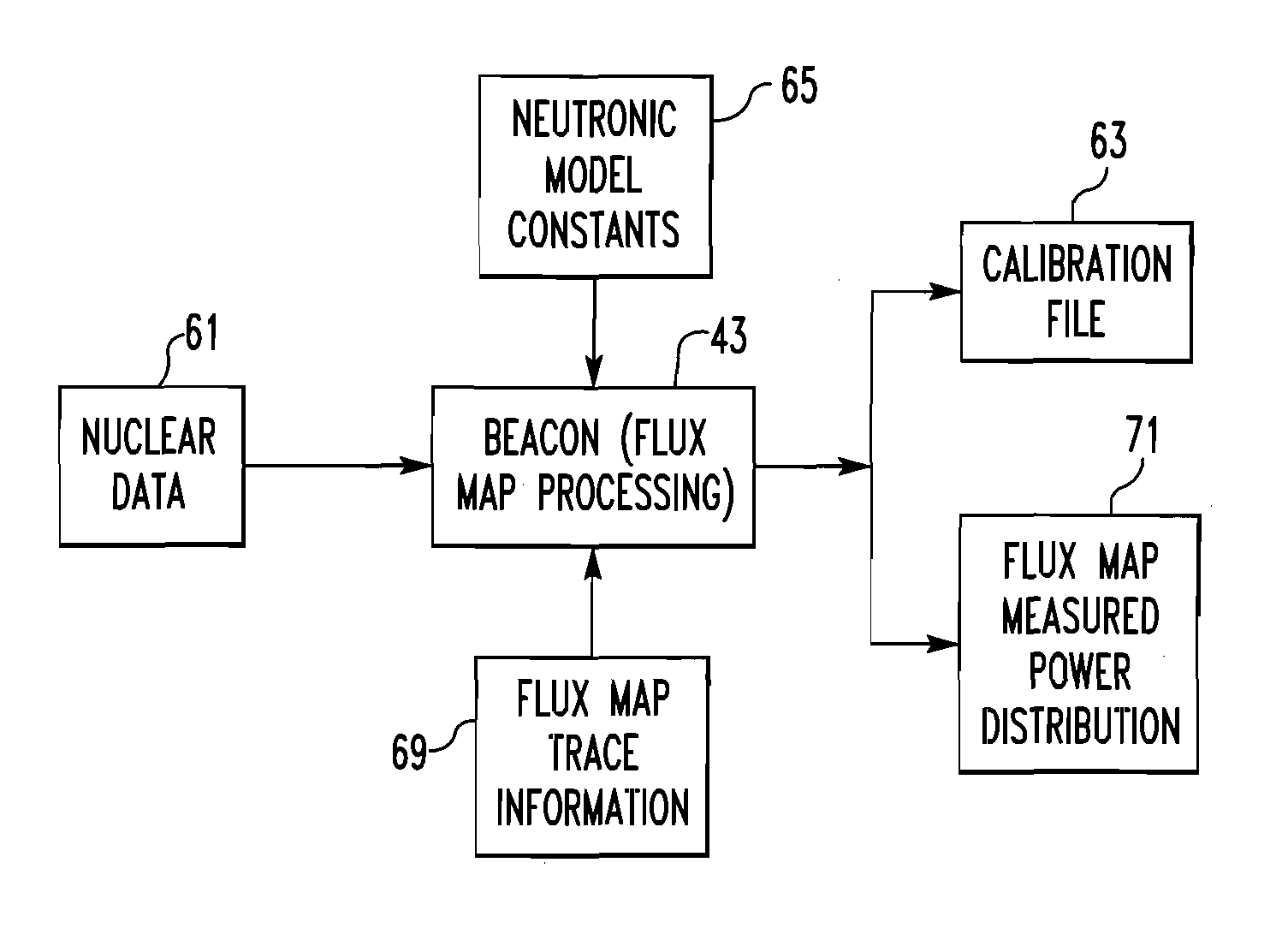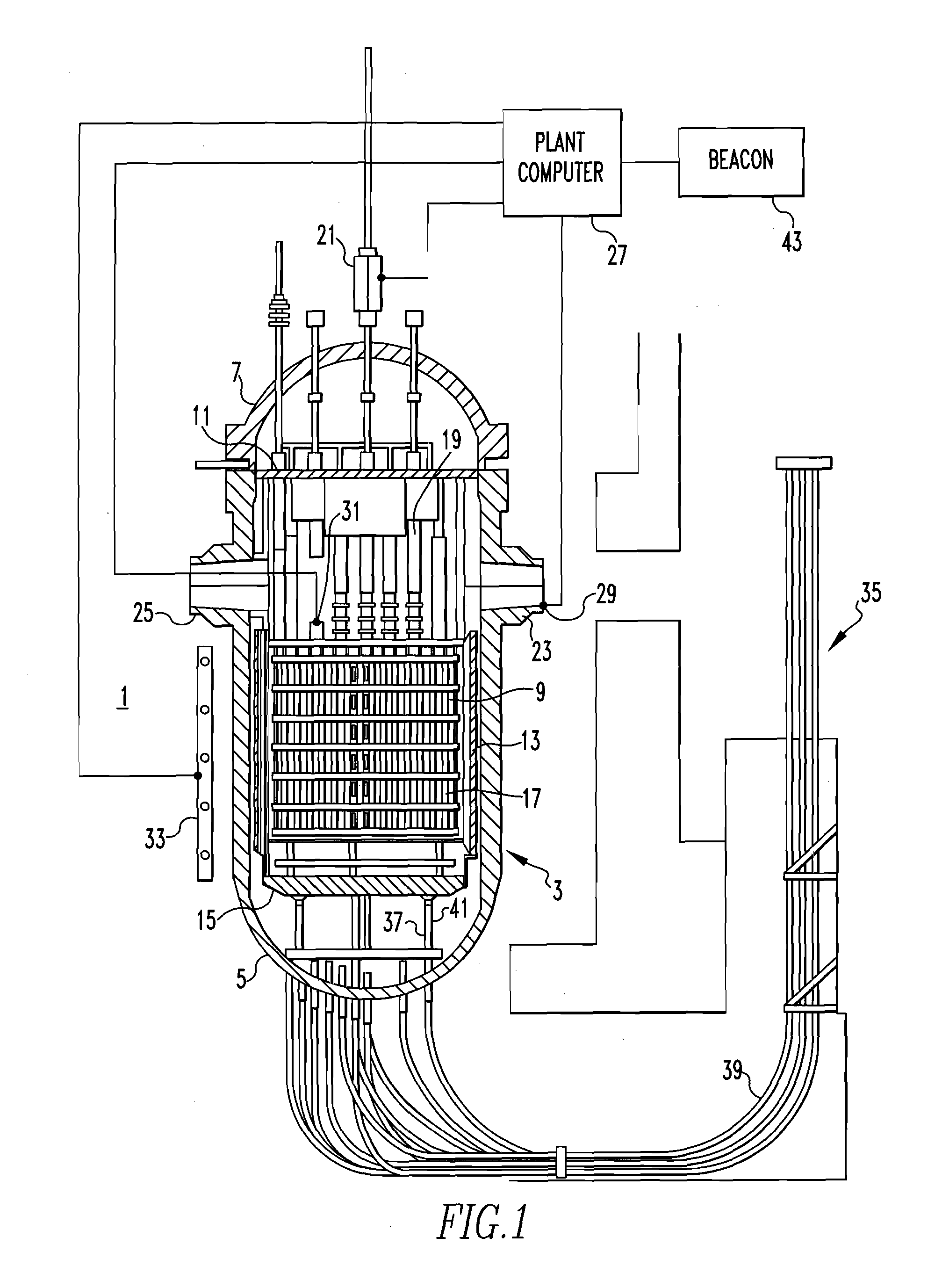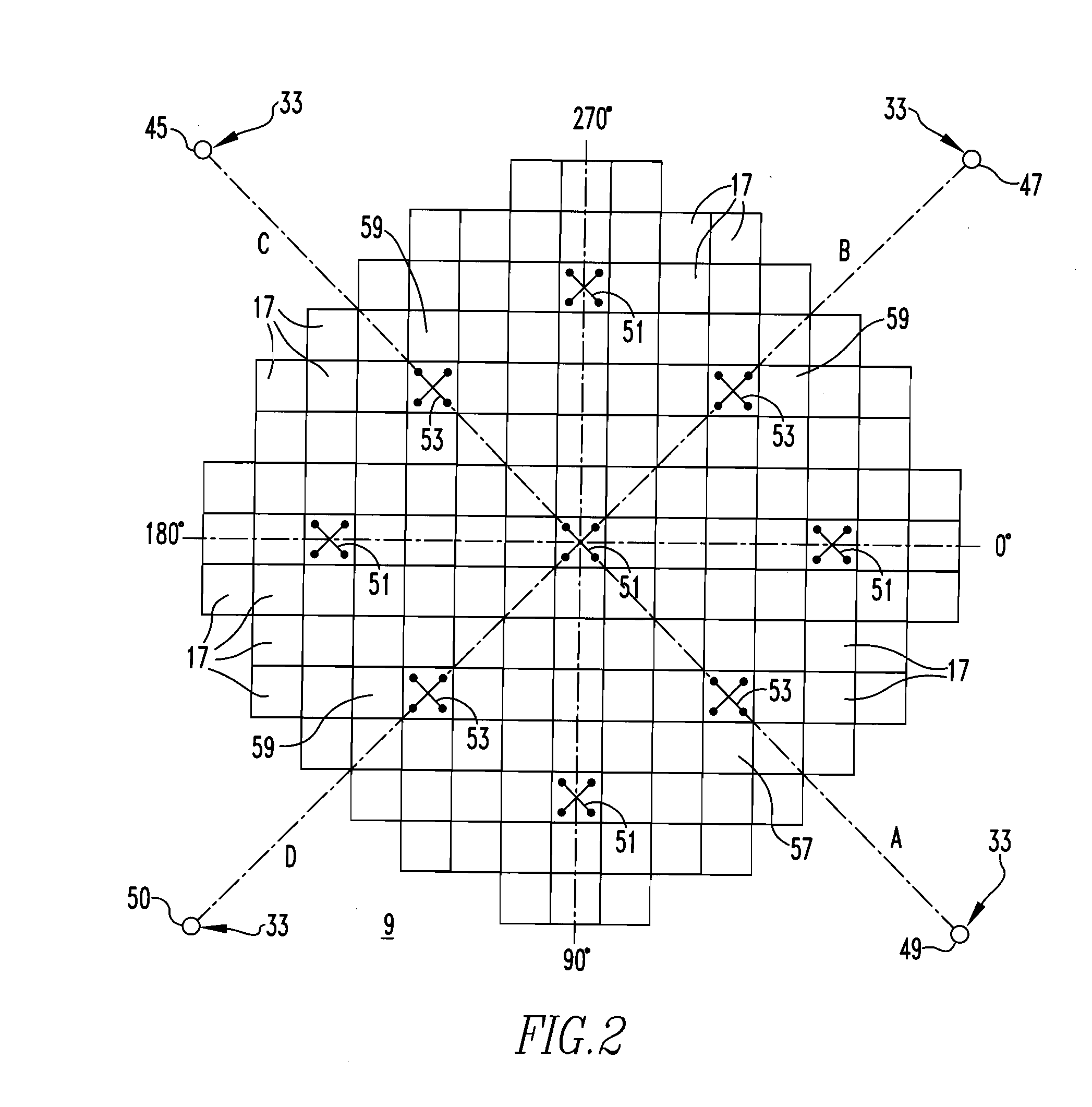Method of calibrating excore detectors in a nuclear reactor
a nuclear reactor and detector technology, applied in nuclear engineering, nuclear elements, greenhouse gas reduction, etc., can solve the problems of inconvenient calibration of multi-point detectors, time-consuming and laborious multi-point calibration, and loss of power generation, so as to improve the accuracy of peripheral-to-core average axial offset relationship and improve the calibration effect of excore detectors
- Summary
- Abstract
- Description
- Claims
- Application Information
AI Technical Summary
Benefits of technology
Problems solved by technology
Method used
Image
Examples
Embodiment Construction
[0025]For purposes of illustration, embodiments of the disclosed concept will be described as applied to calibration of excore detectors in pressurized water nuclear reactors (PWRs) having a movable incore detector system and employing the Best Estimate Analysis for Core Operation—Nuclear (BEACON™) core monitoring system, although it will become apparent that they could also be applied to PWRs employing a core monitoring system other than BEACON, and having a movable incore detector system, a fixed incore detector system, or a combination of both a movable incore detector system and a fixed incore detector system.
[0026]As employed herein, the term “nuclear data” refers to information and parameters representing the fuel assemblies and burnable absorbers in a nuclear core and expressly includes, but is not limited to, neutron flux, power, burnup, inlet temperature, outlet temperature, enthalpy, axial offset and combinations thereof.
[0027]As employed herein, the phrase “non-standard c...
PUM
 Login to View More
Login to View More Abstract
Description
Claims
Application Information
 Login to View More
Login to View More - R&D
- Intellectual Property
- Life Sciences
- Materials
- Tech Scout
- Unparalleled Data Quality
- Higher Quality Content
- 60% Fewer Hallucinations
Browse by: Latest US Patents, China's latest patents, Technical Efficacy Thesaurus, Application Domain, Technology Topic, Popular Technical Reports.
© 2025 PatSnap. All rights reserved.Legal|Privacy policy|Modern Slavery Act Transparency Statement|Sitemap|About US| Contact US: help@patsnap.com



